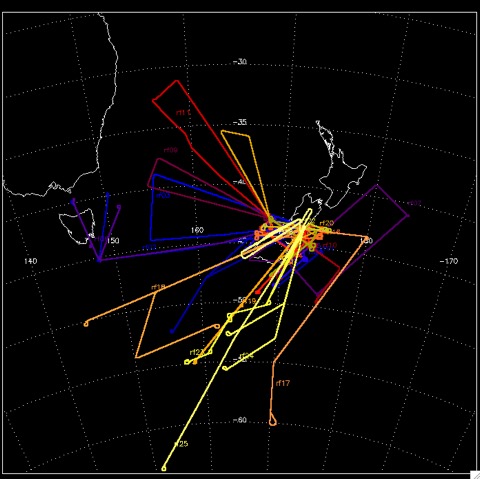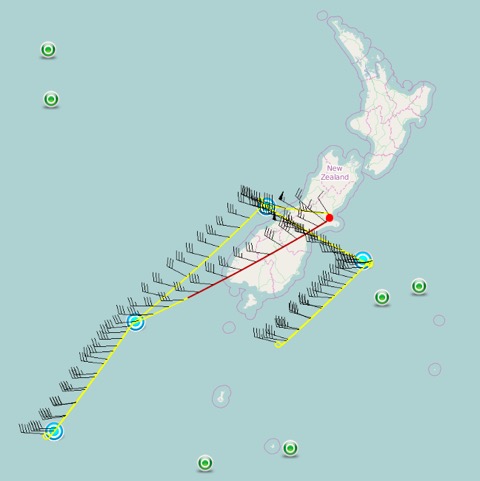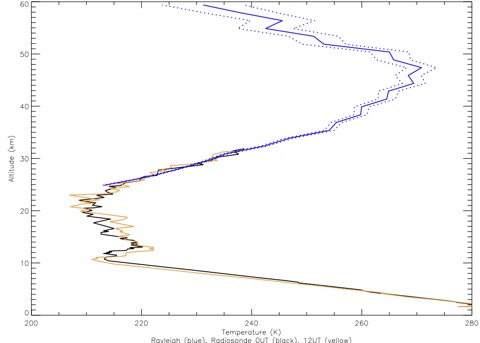Scanning Na beam
15/04/15 13:42
For this project, I invented a new range resolution technique for CW lasers. This involves scanning the 10W CW beam over 1.5degrees repeating at 1 KHz and aligning the forward scan with a 32 channel linear array PMT/range-resolved counter board, Licel sp32, originally designed for lidar range-resolved spectroscopy. During each scan, the image of the beam is aligned with each photocathode for 20usec, yielding about 3km range resolution.
During research flight 17 on July 5, 2014, we saw a nice example of a descending Na layer observed in both the normal pulsed beam (3km full width square pulse) and the scanned beam (~3km FWHM). The scanned beam has higher signal levels but worse range resolution, as expected.

During research flight 17 on July 5, 2014, we saw a nice example of a descending Na layer observed in both the normal pulsed beam (3km full width square pulse) and the scanned beam (~3km FWHM). The scanned beam has higher signal levels but worse range resolution, as expected.

DEEPWAVE campaign completed successfully
01/08/14 16:24
- 26 research flights, 180 flight hours
- 24 flights with lidar data (1 flight with no telescope viewport, 1 daytime flight)
- Latitude from 31.2S to 63.4S
- Longitude from 144.4E to 184.2
- We covered 32 degrees in latitude and 40 degrees in longitude on the research flights.

First DEEPWAVE flight 5 June 2014
06/06/14 05:15
Telescope viewport has bad gasket, so no lidar observations during the first test flight.


Getting Ready for DEEPWAVE
16/04/14 07:39
I am busy getting ready for the DEEPWAVE campaign in June/July 2014 in New Zealand. I have a ground test campaign at GATS starting next week and upload onto the GV May 12.
Prior ground tests have gone well. Here is a comparison with a radiosonde showing good agreement from 25-32km with the Rayleigh lidar measurements at GATS.

Prior ground tests have gone well. Here is a comparison with a radiosonde showing good agreement from 25-32km with the Rayleigh lidar measurements at GATS.



